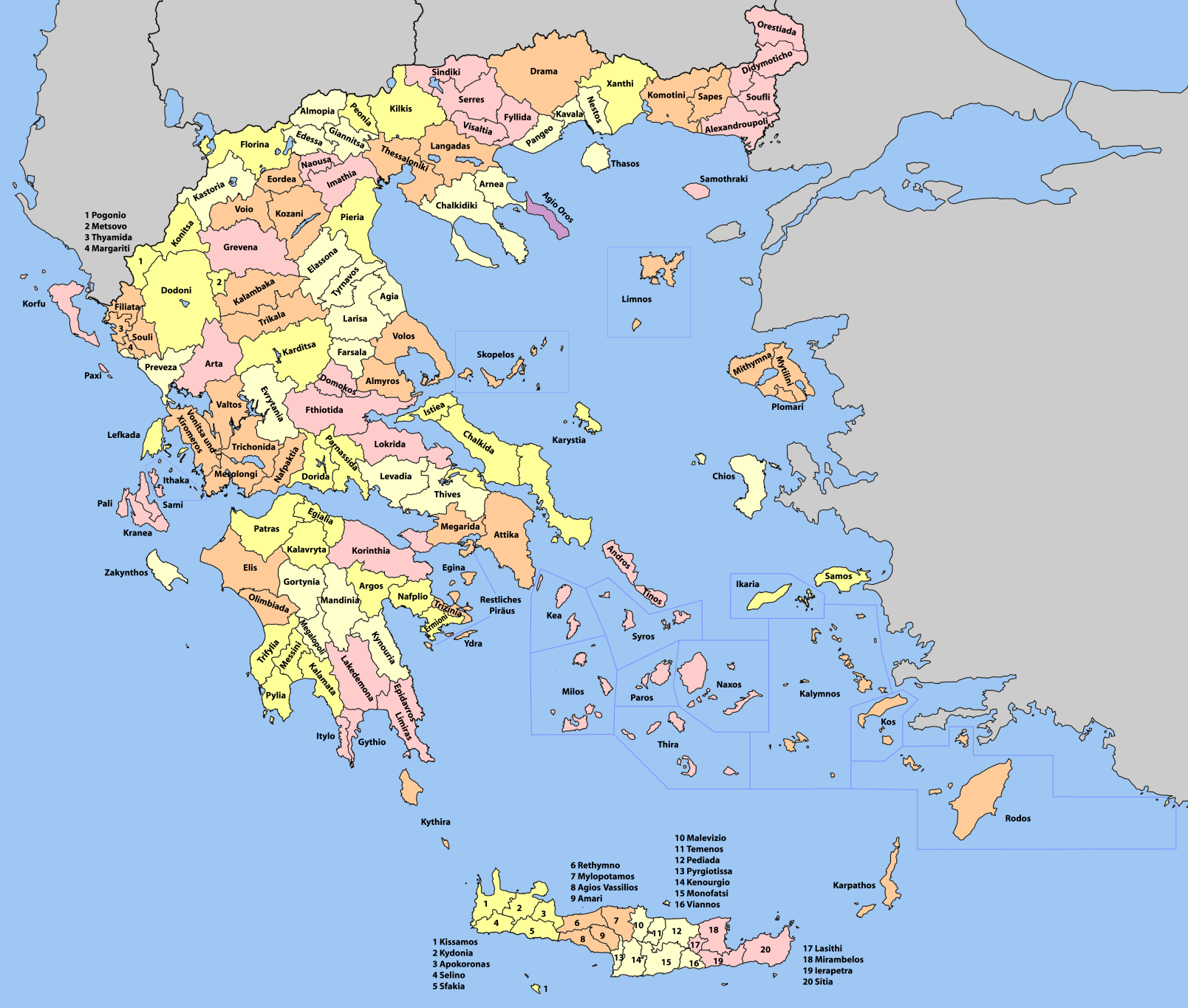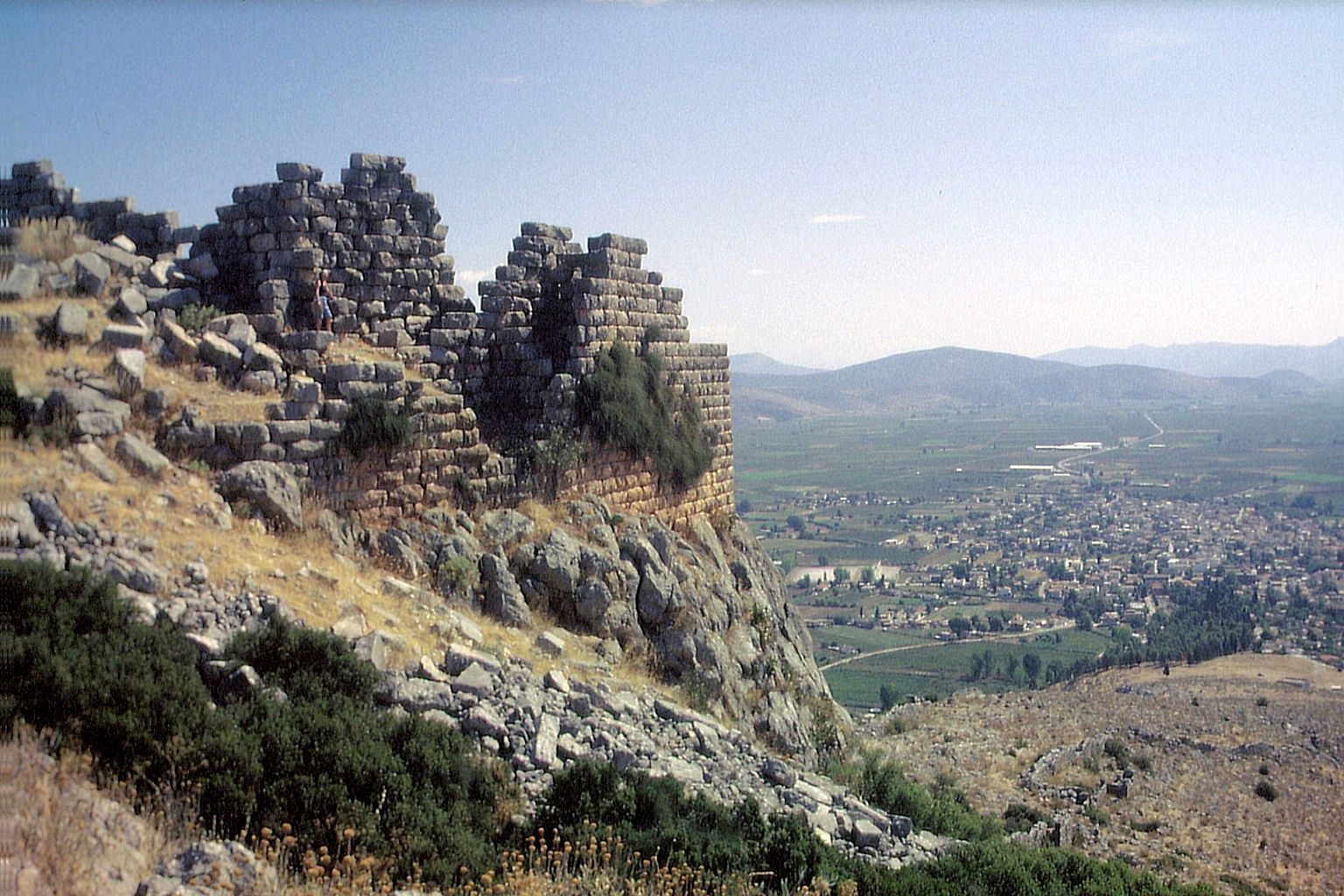|
Livadeia Province
Livadeia Province was one of the provinces of Greece, provinces of the Boeotia Prefecture, Greece. Its territory corresponded with that of the current municipalities Aliartos (except the municipal unit Thespies), Distomo-Arachova-Antikyra, Livadeia, and Orchomenus (Boeotia), Orchomenos (except the municipal unit Akraifnia). It was abolished in 2006. References Provinces of Greece Boeotia {{Greece-gov-stub ... [...More Info...] [...Related Items...] OR: [Wikipedia] [Google] [Baidu] |
Provinces Of Greece
The provinces of Greece ( el, επαρχία, "eparchy") were sub-divisions of some the country's prefectures of Greece, prefectures. From 1887, the provinces were abolished as actual administrative units, but were retained for some state services, especially financial and educational services, as well as for electoral purposes. Before the Second World War, there were 139 provinces, and after the war, with the addition of the Dodecanese, Dodecanese Islands, their number grew to 147. According to the Article 7 of the Code of Prefectural Self-Government (Presidential Decree 30/1996), the provinces constituted a "particular administrative district" within the wider "administrative district" of the prefectures. The provinces were finally abolished after the 2006 Greek local elections, 2006 local elections, in line with Law 2539/1997, as part of the wide-ranging administrative reform known as the "Kapodistrias reform, Kapodistrias Project", and replaced by enlarged Municipalities and ... [...More Info...] [...Related Items...] OR: [Wikipedia] [Google] [Baidu] |
Livadeia
Livadeia ( el, Λιβαδειά ''Livadiá'', ; grc, Λεβάδεια, Lebadeia or , ''Lebadia'') is a town in central Greece. It is the capital of the Boeotia regional district. Livadeia lies north-west of Athens, west of Chalkida, south-east of Lamia, east-south-east of Amfissa, and east-north-east of Nafpaktos. The town lies some west of Greek National Road 3, to which it is linked by National Road 48. The area around Livadeia is mountainous, with farming activities mainly confined to the valleys. The area has traditionally been associated with the production and processing of cotton and tobacco, as well as the cultivation of cereal crops and the raising of livestock. The city also known for having participated in the War of Troy in allegiance with Mycenae. Livadeia is home to Levadiakos FC, members of the Greek Superleague. Geography The municipality of Livadeia covers an area of , the municipal unit of Livadeia and the community . Municipality The municipality ... [...More Info...] [...Related Items...] OR: [Wikipedia] [Google] [Baidu] |
Sin Escudo
In a religious context, sin is a transgression against divine law. Each culture has its own interpretation of what it means to commit a sin. While sins are generally considered actions, any thought, word, or act considered immoral, selfish, shameful, harmful, or alienating might be termed "sinful". Etymology From Middle English sinne, synne, sunne, zen, from Old English synn (“sin”), from Proto-West Germanic *sunnju, from Proto-Germanic *sunjō (“truth, excuse”) and *sundī, *sundijō (“sin”), from Proto-Indo-European *h₁s-ónt-ih₂, from *h₁sónts ("being, true", implying a verdict of "truly guilty" against an accusation or charge), from *h₁es- (“to be”); compare Old English sōþ ("true"; see sooth). Doublet of suttee. Bahá'í Baháʼís consider humans to be naturally good, fundamentally spiritual beings. Human beings were created because of God's immeasurable love for us. However, the Baháʼí teachings compare the human heart to a mirror, whic ... [...More Info...] [...Related Items...] OR: [Wikipedia] [Google] [Baidu] |
Boeotia
Boeotia ( ), sometimes Latinized as Boiotia or Beotia ( el, Βοιωτία; modern: ; ancient: ), formerly known as Cadmeis, is one of the regional units of Greece. It is part of the region of Central Greece. Its capital is Livadeia, and its largest city is Thebes. Boeotia was also a region of ancient Greece, from before the 6th century BC. Geography Boeotia lies to the north of the eastern part of the Gulf of Corinth. It also has a short coastline on the Gulf of Euboea. It bordered on Megaris (now West Attica) in the south, Attica in the southeast, Euboea in the northeast, Opuntian Locris (now part of Phthiotis) in the north and Phocis in the west. The main mountain ranges of Boeotia are Mount Parnassus in the west, Mount Helicon in the southwest, Cithaeron in the south and Parnitha in the east. Its longest river, the Cephissus, flows in the central part, where most of the low-lying areas of Boeotia are found. Lake Copais was a large lake in the center of Boeotia. It was ... [...More Info...] [...Related Items...] OR: [Wikipedia] [Google] [Baidu] |
Aliartos
Aliartos ( el, Αλίαρτος) is a small town and municipality in the Boeotia regional unit, Greece, at 109 kilometres from Athens. The 2011 census recorded 10,887 residents in the municipality, 6,094 residents in the municipal unit and 4,847 in the community of Aliartos. Its name comes from the ancient city of Haliartus. Geography Aliartos lies in the center of the Kopais (Kωπαΐδα) plain. The municipality of Aliartos covers an area of , the municipal unit of Aliartos is and the community is . Climate Under the Köppen climate classification, Aliartos has a hot-summer Mediterranean climate (''Csa''), with wet, cool winters and dry, hot summers. History The modern town of Aliartos is a recent creation. In the early 19th century, the site was occupied by two small agricultural settlements, Moulki (Μούλκι) and Krimpas (Κριμπάς). In 1835, the name of ancient Haliartus was revived for the newly established municipality which encompassed these settlements. Kri ... [...More Info...] [...Related Items...] OR: [Wikipedia] [Google] [Baidu] |
Thespies
Thespies ( el, Θεσπιές; before 1934: ''Erimókastro'') is a village in Boeotia, Greece. A former municipality, which included the village, shared the same name. Since the 2011 local government reform it is part of the municipality Aliartos, of which it is a municipal unit. Population 4,793 (2011). The municipal unit has an area of 108.152 km2, the community 12.725 km2. Thespies is named after the ancient city of Thespiae. Thespies or then Erimokastro used to be an Arvanite Arvanites (; Arvanitika: , or , ; Greek: , ) are a bilingual population group in Greece of Albanian origin. They traditionally speak Arvanitika, an Albanian language variety, along with Greek. Their ancestors were first recorded as settler ... settlement of 1.095 people in 1907. References Populated places in Boeotia {{CentralGreece-geo-stub ... [...More Info...] [...Related Items...] OR: [Wikipedia] [Google] [Baidu] |
Distomo-Arachova-Antikyra
Distomo-Arachova-Antikyra ( el, Δίστομο-Αράχοβα-Αντίκυρα) is a municipality in the Boeotia regional unit, Central Greece, Greece. The seat of the municipality is the town Distomo. The municipality has an area of 294.05 km2. Municipality The municipality Distomo–Arachova–Antikyra was formed at the 2011 local government reform, according to the programme Callicrates, by the merger of the following 2 former municipalities of Arachova and Distomo and from the former community Antikyra, that became municipal units: *Antikyra *Arachova *Distomo :"Distomo" ''may also refer to a work by Federico García Lorca'' Distomo ( el, Δίστομο) is a town in western Boeotia, Greece. Since the 2011 local government reform it is part of the municipality Distomo-Arachova-Antikyra, of which it is t ... References External links Municipalities of Central Greece Populated places in Boeotia {{CGreece-geo-stub ... [...More Info...] [...Related Items...] OR: [Wikipedia] [Google] [Baidu] |
Orchomenus (Boeotia)
Orchomenus ( grc, Ὀρχομενός ''Orchomenos''), the setting for many early Greek myths, is best known today as a rich archaeological site in Boeotia, Greece, that was inhabited from the Neolithic through the Hellenistic periods. It is often referred to as " Minyan Orchomenus", to distinguish it from a later city of the same name in Arcadia. Ancient history According to the founding myth of Orchomenos, its royal dynasty was established by the Minyans, who had followed their eponymous leader Minyas from coastal Thessaly to settle the site. In the Bronze Age, during the fourteenth and thirteenth centuries BCE, Orchomenos became a rich and important centre of civilisation in Mycenaean Greece and a rival to Thebes. The palace with its frescoed walls and the great beehive tomb show the power of Orchomenos in Mycenaean Greece. A massive hydraulic undertaking drained the marshes of Lake Kopaïs, making it a rich agricultural area. Like many sites around the Aegean Sea, Orcho ... [...More Info...] [...Related Items...] OR: [Wikipedia] [Google] [Baidu] |
Akraifnia
Akraifnia ( el, Ακραιφνία) is a former municipality in Boeotia, Greece. It was established in 1997 from the former communities Akraifnio, Kastro and Kokkino. Since the 2011 local government reform it is part of the municipality Orchomenos, of which it is a municipal unit. The municipal unit has an area of 185.816 km2. Population 2,752 (2011). The seat of the municipality was in Akraifnio. It was named after the ancient city Acraephia ''Acraephia'' is a genus of planthoppers in the family Fulgoridae The family Fulgoridae is a large group of hemipteran insects, especially abundant and diverse in the tropics, containing over 125 genera worldwide. They are mostly of moderate .... References Populated places in Boeotia {{CentralGreece-geo-stub ... [...More Info...] [...Related Items...] OR: [Wikipedia] [Google] [Baidu] |
Provinces Of Greece
The provinces of Greece ( el, επαρχία, "eparchy") were sub-divisions of some the country's prefectures of Greece, prefectures. From 1887, the provinces were abolished as actual administrative units, but were retained for some state services, especially financial and educational services, as well as for electoral purposes. Before the Second World War, there were 139 provinces, and after the war, with the addition of the Dodecanese, Dodecanese Islands, their number grew to 147. According to the Article 7 of the Code of Prefectural Self-Government (Presidential Decree 30/1996), the provinces constituted a "particular administrative district" within the wider "administrative district" of the prefectures. The provinces were finally abolished after the 2006 Greek local elections, 2006 local elections, in line with Law 2539/1997, as part of the wide-ranging administrative reform known as the "Kapodistrias reform, Kapodistrias Project", and replaced by enlarged Municipalities and ... [...More Info...] [...Related Items...] OR: [Wikipedia] [Google] [Baidu] |


